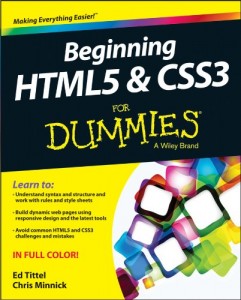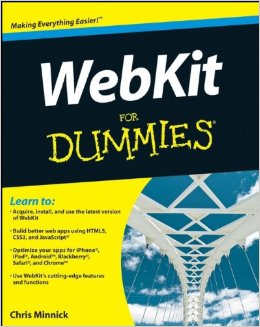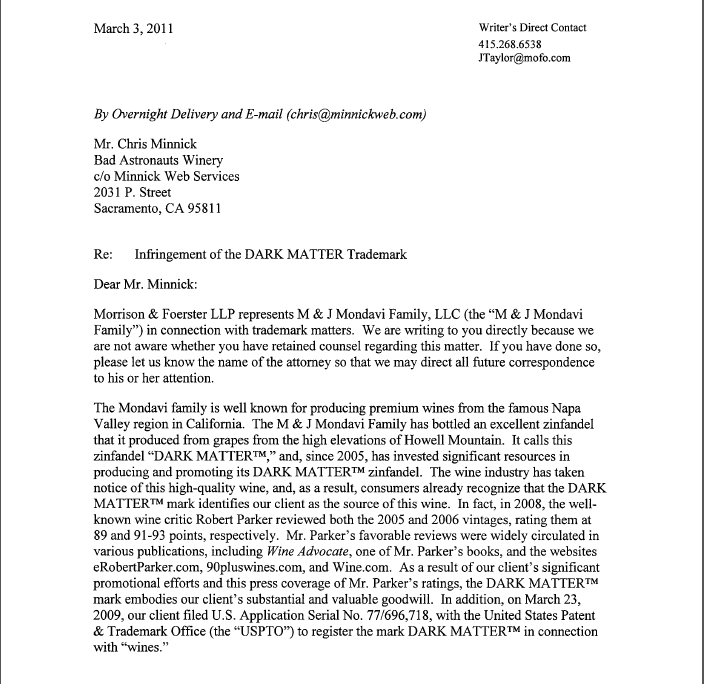I’ve been teaching an online course for several months now. For a year prior to that, I was writing the course and working with the team at Ed2Go to make it sparkle. My course gets an average of about 150 students each month.
for several months now. For a year prior to that, I was writing the course and working with the team at Ed2Go to make it sparkle. My course gets an average of about 150 students each month.
Since I get asked about it pretty often, and since I feel like I’m starting to get a pretty unique perspective on online learning, I thought I’d share my experience with you, my excellent readers.
My course is called Creating Mobile Apps with HTML5 . Needless to say, the course has to cover a LOT of technologies. To further complicate things, I designed the course to be useful for a very wide range of people — from those with very little web development experience to those with tons of experience, but perhaps not so much with HTML5 technologies. To elaborate and further set the stage….
. Needless to say, the course has to cover a LOT of technologies. To further complicate things, I designed the course to be useful for a very wide range of people — from those with very little web development experience to those with tons of experience, but perhaps not so much with HTML5 technologies. To elaborate and further set the stage….
I must teach:
- HTML, JavaScript, CSS, JQuery, JQuery Mobile, JSON, web browser fundamentals, AJAX fundamentals, web performance tuning, offline database, web APIs, PhoneGap, and more.
- In just 12 lessons.
- To 150 students
- Who are located all over the world
- And who have varying levels of experience and knowledge
- On the Web.
This is quite a daunting task…but I only have myself to blame for designing the curriculum and taking it on. When I first signed on to be an Ed2Go instructor, I was just finishing writing my book (WebKit for Dummies), and I was high on my knowledge of all things HTML5 and so I plowed on, despite my previous less-than-perfect experience with online learning.
I’m somewhat of a veteran of online teaching, having taught my first online course (for a community college) back in 2001. At the time, I was frustrated with the format and the lack of ability to really communicate with the students. After one semester, I threw up my hands and pretty much decided that online teaching was way more difficult than live teaching, and that it wasn’t worth the effort for the teacher or the students.
But that was then. Today, pretty much the exact same classroom software is being used for my online course (a learning-oriented forum system), but the entire process for developing and teaching the course has been very different.
I wrote my first online course (on web application development) over a period of about 2 weeks. It consisted of a sloppy powerpoint deck and some links to more information. There were no standards, no editorial review, and no assistance from the school. I don’t think anyone else at the school knew what I was teaching.
Ed2Go, on the other hand, is extremely process-oriented. Deadlines are tight, and quality standards are very high. More importantly, both are strictly enforced. I consider my editor at Ed2Go to be one of the very best I’ve ever worked with. She kept me honest about whether I was doing my best work, edited me where I needed it (always making me look better than I am), and put up with (and maybe understood) my sense of humor and why I thought it was important to keep certain jokes in the lessons. Writing my course was probably the most difficult writing project of my career, and it took almost a year, during which I worked on it for 4 hours a day and got paid nothing.
Now I’m teaching the course (and getting paid, thanks). My students get a new lesson every Wednesday and Friday. The lesson contains 5 chapters of pre-written instruction, an assignment (usually a little programming task), some frequently asked questions, a list of additional resources, and a quiz. At the end of the 12th lesson, students take the final exam, which consists of 25 multiple choice questions. I’m available to answer questions in a forum area during the duration of the course, but the students’ successful completion of the course is based solely on how they do on the final exam.
The format really works, and the vast majority of my students that I get to interact with seem to get a lot out of it and have a good time. They rank me highly on the surveys at the end of the class and say really nice things in the course feedback.
So, where’s the big “but”? There really isn’t one. I enjoy interacting with my students and I firmly believe that I’m teaching them some really valuable skills and passing on some great information.
There is an occasional challenge brought on by a software dependency that suddenly makes part of the course obsolete or incorrect. Sometimes, a student may get frustrated and take it out on me (that’s what they make the delete button for!), and sometimes I may come home from happy hour too late and fail to do as good of a job explaining the inner workings of JavaScript arrays as I could have done several beers back. But, all in all, I’m really happy with my latest online teaching experience and I’m feeling really positive about the potential for affordable and high-quality online learning.
psst…Want to take my class? A new session is starting soon. Click Here!
My latest book, which I co-authored with Ed Tittel, is out now and available everywhere computer books are sold! If you have no previous experience with web development and you’re interested in learning to create websites, or if you’re already a web developer and want to brush up on the latest HTML and CSS technologies, this is the book for you!












